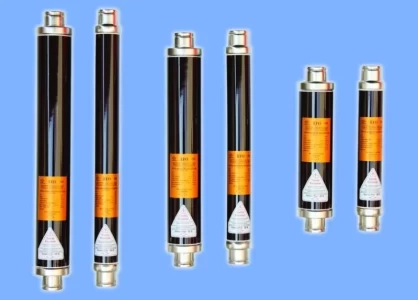Environmental Impacts on LV Fuse Performance
Low voltage fuses are designed to protect electrical circuits from overloads and short circuits, ensuring the safety and reliability of electrical systems. However, their performance can be significantly affected by environmental conditions such as temperature and humidity. Understanding the impact of these conditions is crucial for selecting, using, and maintaining low voltage fuses effectively.
The Role of Environmental Conditions
The operating environment plays a crucial role in how LV fuses perform. Here's how some key factors can influence fuse behavior:
Temperature: LV fuses are designed to operate within a specific temperature range. Extreme temperatures can affect their performance in two main ways:
High Ambient Temperature: Elevated temperatures can cause the fuse element to heat up even under normal operating conditions. This reduces the margin available before the fuse melts during an overcurrent event, potentially leading to delayed fault clearing or even failure to interrupt the fault altogether.
Low Ambient Temperature: In cold environments, the fuse element may take longer to heat up and reach its melting point. This can result in slower response times during fault events, potentially increasing equipment damage.
Humidity: High humidity levels can accelerate the corrosion of fuse element materials and connections. This can weaken the element, potentially leading to premature failure or altered tripping characteristics.
Altitude: At higher altitudes, the air density decreases, affecting the rate of heat dissipation from the fuse element. This can lead to similar challenges as high ambient temperature, with delayed fault clearing or potential failure to interrupt faults.
Understanding Fuse Ratings and Derating
LV fuses are typically characterized by two key ratings:
Current Rating: This specifies the maximum continuous current the fuse can carry without melting.
Interrupting Rating: This indicates the maximum fault current the fuse can safely interrupt.
Environmental conditions can necessitate derating a fuse, meaning using a fuse with a lower current rating than its nominal value. Derating factors account for the specific environmental conditions to ensure the fuse element does not overheat and can reliably interrupt faults.
Technical Considerations for Environmental Adaptation
Selection of Fuses
Selecting fuses that are designed to withstand specific environmental conditions is critical. Manufacturers often provide fuses rated for particular temperature and humidity ranges, and these specifications should guide the selection process to ensure reliable operation.
Environmental Protection Measures
Implementing protective measures such as climate-controlled enclosures or desiccants can mitigate the impact of adverse environmental conditions. These solutions help maintain the integrity of the fuse and its housing, ensuring consistent performance.
System Design and Maintenance Strategies
Designing for Environmental Conditions
Electrical systems should be designed with consideration of the environmental conditions they will face. This includes selecting appropriate fuses and other components that can operate reliably under expected temperature and humidity ranges.
Regular Maintenance and Inspections
Regular maintenance and inspections are crucial to identify and mitigate the effects of environmental conditions on low voltage fuses. Inspections can detect signs of corrosion, insulation degradation, or other issues, allowing for timely maintenance or replacement of affected fuses.
The reliability and performance of low voltage fuses can be significantly influenced by environmental conditions, particularly temperature and humidity. Understanding these impacts is essential for the proper selection, use, and maintenance of fuses in various settings. By considering the environmental challenges and implementing appropriate measures, the integrity and functionality of low voltage fuse systems can be preserved, ensuring continued protection and safety of electrical installations.

